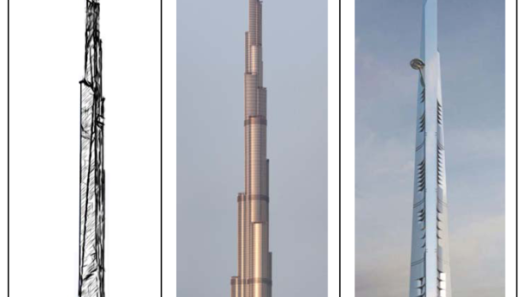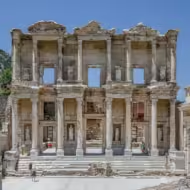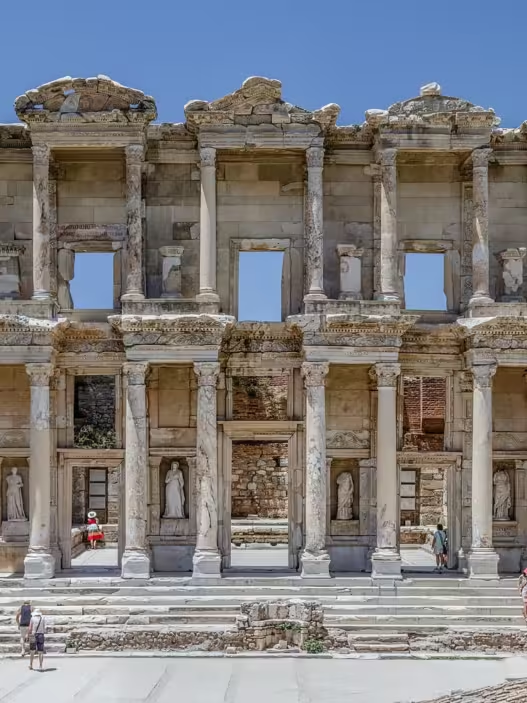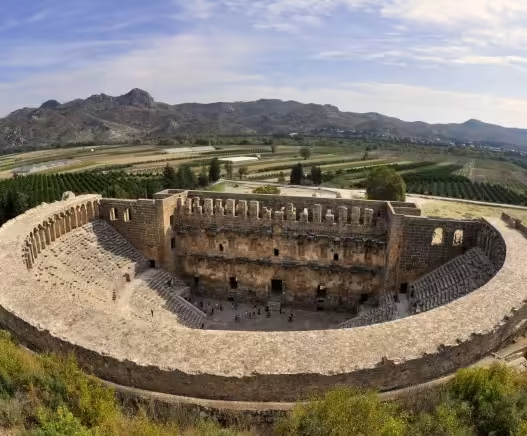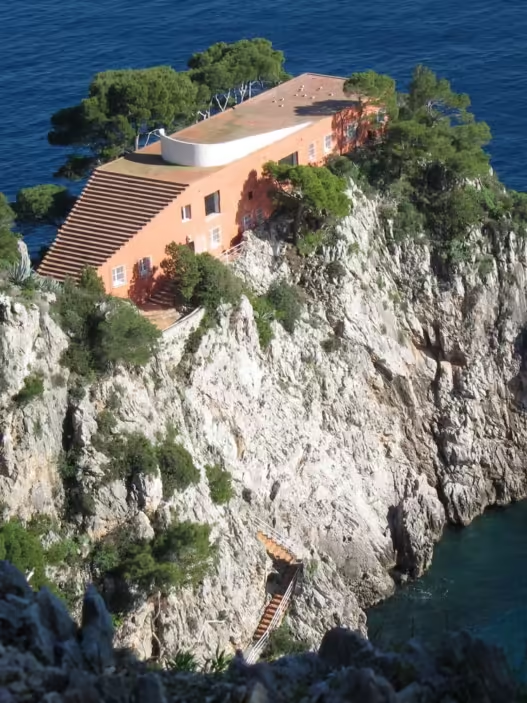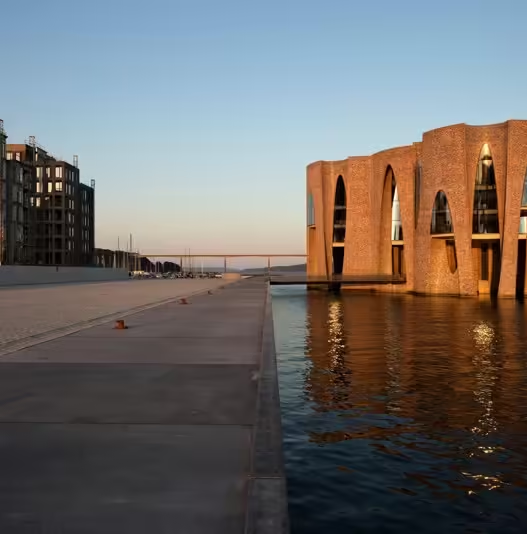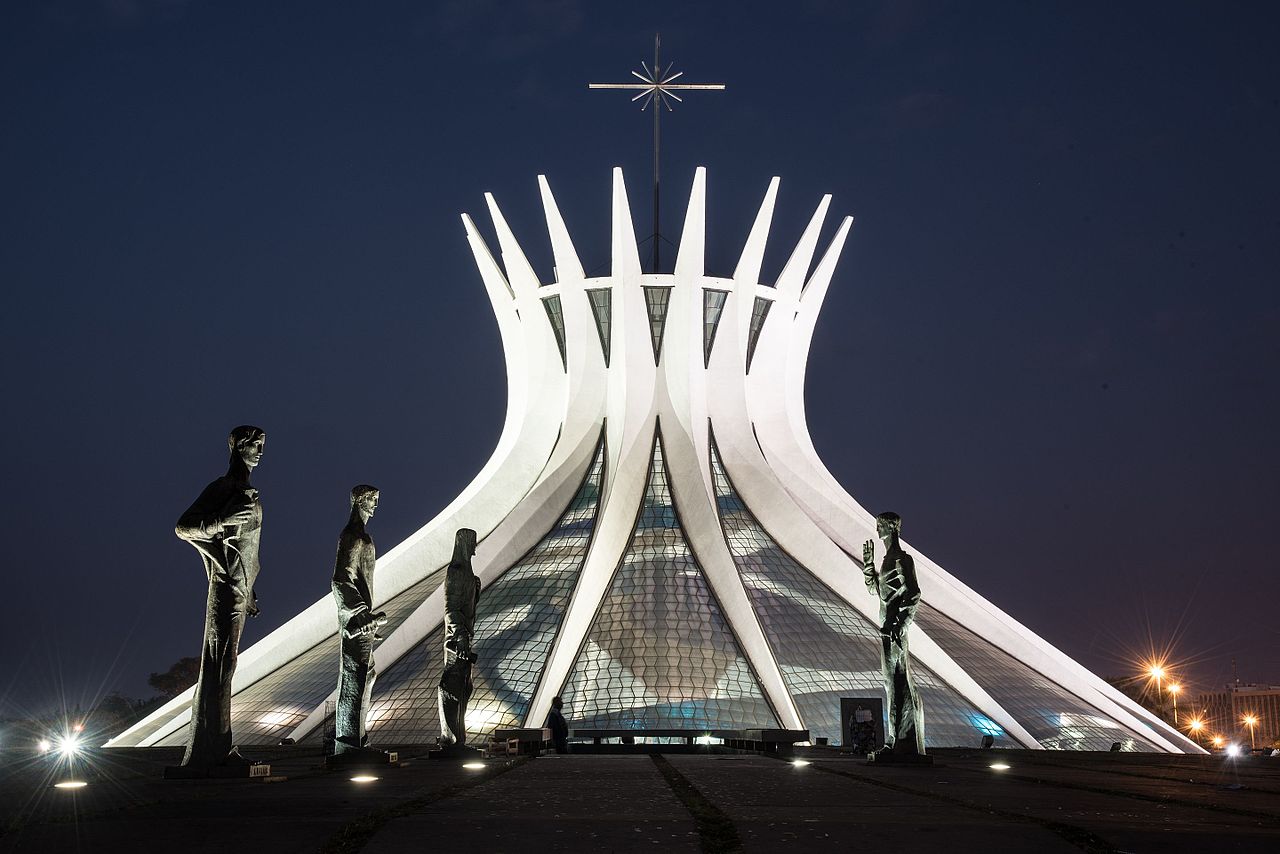Reflecting the historical splendor of the Bosphorus, the Maiden’s Tower, one of the symbols of the city adorned with cultural and historical depths, is a unique structure that continues its existence by defying the resistance of time and waves. On the small island where it was built, it has been a witness to different civilizations throughout history and has built a bridge from the past to the present with its meaningful stones. This architectural study will examine in detail how the Maiden’s Tower is a witness to history through its rich 2500-year history and the legends surrounding it.
- The Maiden’s Tower is one of the historical and cultural landmarks of the Bosphorus and has a rich history of over 2500 years.
- The Maiden’s Tower has been in existence since ancient Greek times and has been used as a lighthouse, customs station, quarantine center and watchtower over time.
- The construction of the Maiden’s Tower dates back to 410 BC and was built by the Athenian commander Alkibiades to control the entrance to the Bosphorus.
- During the reign of Emperor Manuel Komnenos (12th century), the towers were built as a strategic defense.
- During the reign of Sultan Mehmet the Conqueror, the Maiden’s Tower was of strategic importance during the conquest of Istanbul and was used as a base by the Venetians.
- During the Ottoman period, the Maiden’s Tower served as a lighthouse and a showground in addition to its defensive use.
- During the Republican period, the Maiden’s Tower was subjected to various restoration and reconstruction works and equipped with modern functions.
- Today, the Maiden’s Tower serves as a café and restaurant, preserving its historical and cultural significance.
- The Maiden’s Tower has also been the subject of many legends, such as the love story of Hero and Leandros in Greek mythology.
- Many different legends, such as the legend of the “Poisonous Snake in the Basket” and the legend of the “Lion’s Gate”, circulate around the Maiden’s Tower and add to its mystery.
- The Maiden’s Tower has undergone many changes and restorations during its construction and reconstruction.
- Throughout history, the tower has assumed different functions such as controlling sea traffic, ensuring security and serving various civilizations.
- It is known that the Maiden’s Tower has been an important part of Istanbul and the Bosphorus since 341 BC.
- Emperor Manuel Komnenos’ strategic plan aimed at strengthening control of the Bosphorus and blocking enemy ships.
- The history of the Maiden’s Tower has witnessed turning points, such as its use by the Venetians during the conquest of Istanbul.
- During the Ottoman period, the Maiden’s Tower was used both for defense purposes and played a central role in various ceremonies and shows.
- During the Republican period, the modernization of the Maiden’s Tower and changes in its function have transformed it into a contemporary tourist attraction.
- The various legends of the Maiden’s Tower add meaning and mystery to the structure and draw visitors into fascinating stories.
- The current functions of the Maiden’s Tower make it a modern space intertwined with history and culture.
The origins of the Maiden’s Tower date back to Ancient Greece. Born in ancient times and bearing the traces of many civilizations, this structure has been used for different purposes over time. The Maiden’s Tower, which was first used as a watchtower to control sea traffic when it was first built, has also served as a lighthouse, customs station and even a quarantine center. This structure, which assumed different functions in each period, witnessed the change in the social and economic fabric of Istanbul.

It is a four-sided, artfully built high tower in the sea, an arrow’s throw away from the land. Its height is exactly 80 (eighty) cubits. Its surface is two hundred steps. It has gates on two sides.
Evliya Çelebi wrote about the distance of the Maiden’s Tower from the land
Let’s examine the Maiden’s Tower together.
Maiden Tower History
Although there is no exact information about when the Maiden’s Tower was built, some sources indicate that the architectural construction of the Tower dates back to 341 BC.
BC Maiden’s Tower
According to historical sources, the story of the Maiden’s Tower begins when a piece of land, which is a protrusion of the coast, breaks off over time. The foundations of the Maiden’s Tower were laid when this piece of land separated and formed an islet. The rock on which the Maiden’s Tower, which witnesses the history of Istanbul, first made its name in 410 BC. During this period, the Athenian commander Alkibiades had a tower built on this small island to control the entrances and exits of the Bosphorus and to collect taxes. The chain extended from Sarayburnu to the island transformed the tower into a customs station controlling the maritime traffic of the Bosphorus.
Over the years, the Maiden’s Tower’s role in history evolves and is shaped by the events that witness this evolution. In 341 BC, the Greek Commander Chares once again shaped the island’s history by adorning the tower with richly decorated marble columns to build a monumental tomb for his wife.
Roman Period
By the mid 1110s A.D., a new era in the history of the Maiden’s Tower was dawning. The first distinct trace that appears on the surface of this small island is a structure built during the reign of the Byzantine Emperor Manuel Comnenos, between 1143 and 1178, on his orders. Emperor Manuel had two towers built on this island in order to strengthen the city’s defenses.
Emperor Manuel made a strategic plan to make the city defense more effective. A key part of this plan was to build towers at two important points on the Bosphorus. One of them was built next to the old Mangana Monastery, located on the coastal area where Topkapı Palace is located today, and the other one was built on the islet where the Maiden’s Tower is located.
Emperor Manuel attached particular importance to the construction of these towers in order to control maritime traffic and prevent enemy ships from entering the Bosphorus. At the same time, he aimed to collect customs tax by controlling the passage of merchant ships through the Bosphorus. To further strengthen this strategy, he had a large chain tied between the two towers. This chain proved to be an extremely effective strategy to block enemy ships and ensure the control of merchant vessels.
This strategic move by Emperor Manuel reflects not only the military but also the commercial and economic dimensions of the Byzantine Empire’s efforts to strengthen its control of Constantinople. The role of the Maiden’s Tower in this period takes its place in history as a reflection of Emperor Manuel’s bold and clever strategy.
During the Byzantine Empire’s time on the stage of history, the story of the Maiden’s Tower witnessed attrition and reconstruction. The events of this period show that many different functions were attributed to the structure and that it was a temporary shelter in the hands of various civilizations.
The Maiden’s Tower continued its existence as a structure that was destroyed from time to time and then repaired. During this process, the tower was rebuilt in different periods and maintained its existence. But perhaps one of the most interesting periods took place during the conquest of Istanbul.
The conquest of Istanbul and the role of the Maiden’s Tower
During the conquest of Istanbul, the Maiden’s Tower witnessed another historical turning point. The Venetians decided to use this strategic structure as a base. Sultan Mehmet the Conqueror deployed a fleet under the command of Commander Treviziano from Venice around the Maiden’s Tower to help the Byzantine Empire during the siege of Istanbul.
During this period, the Maiden’s Tower was under the influence of different civilizations, as it had been in the late Byzantine Empire. The Venetian use of this strategic location provides important information about both its pre-conquest state and post-conquest arrangements.
The history of the Maiden’s Tower reflects the political complexities of the late Byzantine Empire, how Istanbul was valued by its new owners after the conquest, and the impact of different civilizations on this symbolic structure. During this period, the Maiden’s Tower stands out as a monument where not only stones but also civilizations changed hands.
Ottoman Period
After the conquest, Mehmet the Conqueror had this small castle demolished and a small stone castle surrounded by battlements was built in its place. These cannons in the castle became an effective weapon for the ships in the harbor. However, during the Ottoman period, the tower was used as a demonstration area rather than a defensive fortress, and the mehterans sang a song along with the cannon shots. The foundations of today’s tower and important parts of the lower floor are the structures of the Fatih period.
Throughout the Ottoman period, it is known that the Maiden’s Tower was restored or rebuilt from time to time. In 1509, a 7.2 earthquake, known as the “small apocalypse“, damaged the Maiden’s Tower as well as many other structures in Istanbul, and the tower was repaired during the reign of Yavuz Sultan Selim. Due to its shallow surroundings, a lantern was placed in the tower after the 17th century. From this date on, the tower no longer served as a defense fortress but as a lighthouse. During this period, the cannons in the tower were no longer fired for protection, but for saluting during ceremonies. After the death of Suleiman the Magnificent, Prince Selim, who came to Istanbul to take the throne, was greeted with cannons fired from the Maiden’s Tower as he passed through Üsküdar. For a long time thereafter, this greeting was made for every Sultan who ascended the throne, and the Sultan’s accession to the throne was announced to the public with cannon shots.
In 1719, a fire broke out in the lighthouse and the tower, which was completely wooden inside, burned down. In 1725, the tower was extensively repaired by Nevşehirli Damat İbrahim Pasha, the Chief Architect of the city. The Maiden’s Tower was once again used as a defensive fortress as the Ottoman Empire entered a period of decline. In 1830-1831, the tower became a quarantine hospital to prevent the cholera epidemic from spreading to the city. During the plague epidemic of 1836-1837, in which 20 thousand to 30 thousand people died, some of the patients were quarantined in the hospital established here. The quarantine applied in this hospital bore fruit and the spread of the epidemic was prevented. The last major renovation of the Maiden’s Tower during the Ottoman period was carried out during the reign of Mahmut II. After the renovation in 1832-33, which gave the tower its present form, an inscription bearing the monogram of Sultan Mahmut II was placed on the marble above the gate of the Maiden’s Tower with the writing of the famous calligrapher Rakım. In this restoration in the Ottoman-Baroque architectural style, a segmented dome and a flagpole rising from the dome were added to the tower.
Republic Period
The Republican period was one of the turning points in the history of the Maiden’s Tower, and the reconstructions and changes in function during this period shaped the tower in terms of modernization and functionality.
During the Second World War, the Maiden’s Tower was once again subjected to renovation. During this period, the rotten wooden parts of the tower were repaired and the unreliable parts were rebuilt in reinforced concrete. In 1943, the tower underwent major repairs and large boulders were placed around it to reduce the risk of it sliding into the sea. During this period, the warehouses and gas tanks surrounding the tower were also removed, giving the tower more freedom and visibility.
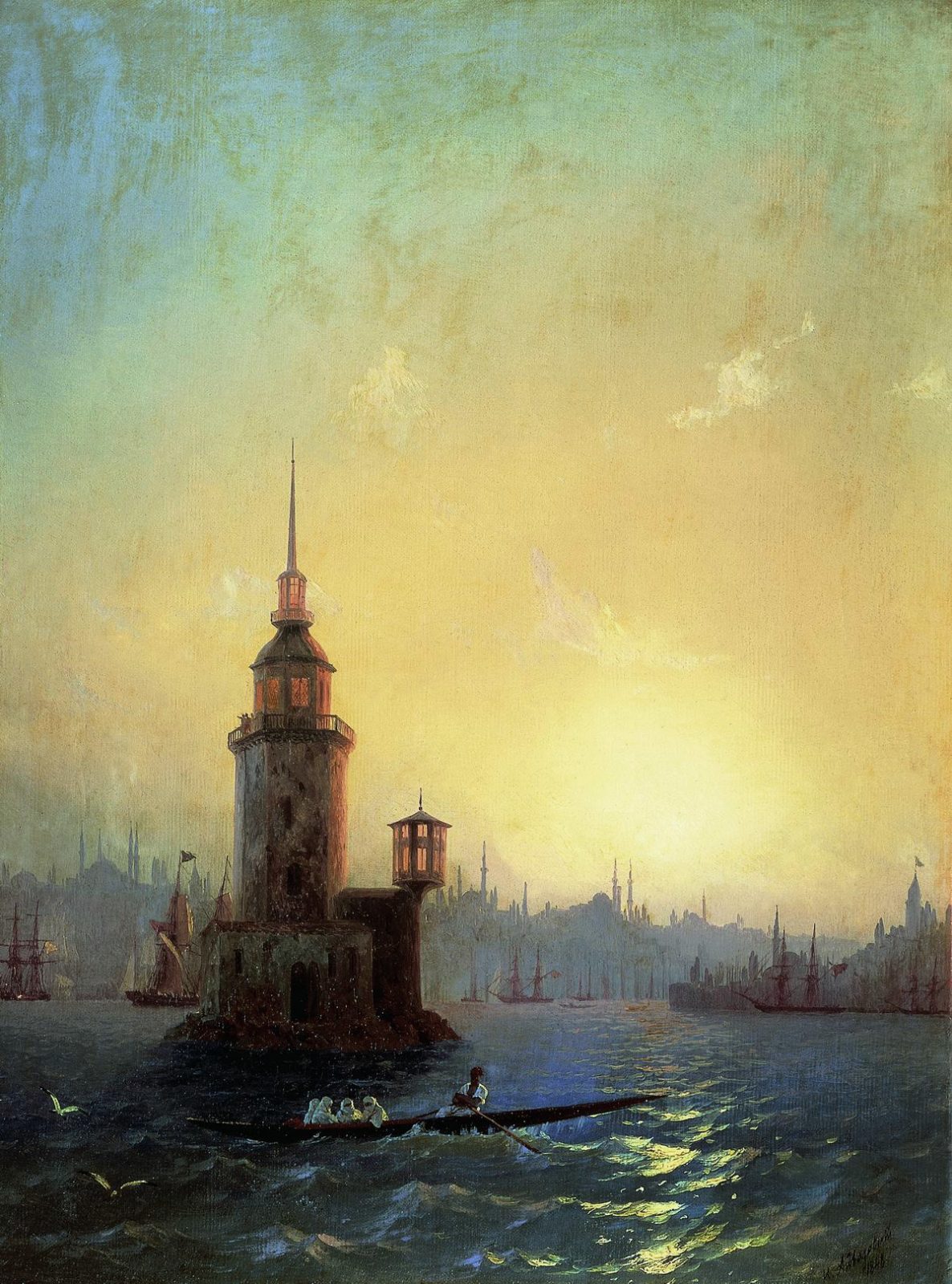
In 1959, the Maiden’s Tower was transferred to the Military and used as a radar station to monitor the maritime and air traffic of the Bosphorus for use by the Naval Forces Command. During this period, the tower became a platform for the integration of modern maritime security and communication technologies.
After 1983, the Maiden’s Tower was transferred to the Maritime Administration and used as an intermediate station until 1992. During this period, the tower played an important role in supporting maritime traffic and guiding sailors.
These reconstructions and changes in function during the Republican period show how the Maiden’s Tower has evolved in its modern period and how it has been used for different purposes. In addition to being a historical and cultural symbol, the tower has maintained its importance as a center of functionality where modern technologies were integrated.
Maiden’s Tower today
The Maiden’s Tower, with its rich historical and cultural heritage spanning thousands of years, continues to be important today. Beginning in 1995, a restoration process was carried out with respect for the history and original architecture of this unique structure. After the meticulous completion of the restoration work, the Maiden’s Tower reopened its doors to visitors in 2000.
Today, the Maiden’s Tower serves both as one of the symbols of Istanbul and as a place that reflects its rich history. During the day, it serves its guests as a café, while in the evenings it welcomes its guests as a restaurant in a romantic atmosphere. These changes in function show the Maiden’s Tower’s steps towards becoming a place where history and culture merge with contemporary functionality.
The Maiden’s Tower welcomes its visitors by offering an atmosphere surrounded by sea views, paved with historical stones and woven with legends. Visitors have the opportunity to get to know the history and cultural fabric of Istanbul more closely and enjoy being in an environment where they can experience unforgettable moments.
Today, as a monumental relic of history, the Maiden’s Tower has become a major tourist attraction, attracting the attention of not only Istanbul, but also Turkey and the world.

Legends of the Maiden’s Tower
The Maiden’s Tower is one of the most legendary monuments in Istanbul. The Greeks, Romans and Ottomans told different legends. Let’s take a look at these legends together…
Names of the Maiden’s Tower
The Maiden’s Tower has survived to the present day as a mysterious monument rising above the waters of the Bosphorus. Surrounded by the secrets and legends it has carried for thousands of years, it is a structure where history and romance merge. The secrets of this cultural treasure are important anecdotes, each bearing the traces of the past.
The story of the Maiden’s Tower begins with an event that took place in 341 BC, when Chares the Greek had a marble sarcophagus built for his wife in this area. After this sarcophagus, the name “Damalis”, one of the old names of the tower, emerges. This name is said to have come from the name of Chares’ wife, and this name has given the Maiden’s Tower a unique history over time.
In the 12th century, the Byzantine Emperor Manuel Komnenos had two towers built to prevent enemies from entering this strategically important area. One of these towers is on the shore of Topkapı Palace and the other is on the Üsküdar coast where the Maiden’s Tower is located today. The chain that Komnenos stretched between the two towers goes down in history as a security measure for the inspection of ships passing through the Bosphorus.
The story of the Maiden’s Tower during the Byzantine Empire is further colored by the fact that during the conquest of Istanbul, the Venetians helped the Byzantines by using this tower as a base. After conquering Istanbul, Mehmet the Conqueror transformed the Maiden’s Tower for defense purposes and placed cannons around it. As a part of the strong defense of the Bosphorus, this tower has come to mean much more than defense. The tower is also used as a performance center, a quarantine room and even a place of exile.
The Maiden’s Tower’s ancient names – Arkla, Damalis and Leandros’ Tower – each tell stories from different eras. These names reflect the different identities and functions of the tower’s past, enriching its meaning and significance. The secrets woven around this structure invite visitors to the magical world of the past while harboring a story under each stone and wall.
The Legend of Hero and Leandros
Hero is one of the priestesses of Aphrodite, the goddess of love and beauty in Greek mythology. She works in the Maiden’s Tower. Being a nun, she is forbidden to love.
One day she leaves the tower for a ceremony and goes ashore. There she meets a priest named Leandros and falls in love with him at first sight. The priest Leandros has the same feelings. The only way for them to see each other is for Leandros to swim across the cold and currenty waters of the Bosphorus at night. The story of the couple, who fall in love in this way for a while, ends one windy night when the lantern Hero lights to guide her lover goes out. Leandros, who lost his way in the dark, drowns helplessly in the cold waters of the Bosphorus. According to legend, Hero, who witnessed this situation with her own eyes, could not bear the pain she was experiencing and ended her life by immersing herself in the same cold waters of the Bosphorus.
Admiral Chares
This story reveals the romantic and emotional aspects of the Maiden’s Tower, opening the door to a pause in the history of the structure.
In ancient Greek times, when Constantinople was in the hands of Athens, an admiral or king named Chares or Kharis came to the region. Sent against the threat of the Macedonian King Philip I, this leader’s wife lost her life in Constantinople. Admiral Chares, or King Kharis, was deeply saddened by the loss of his wife. He must have wanted to keep her memory alive and create an immortal place for her, so he laid the foundations of the Maiden’s Tower.
The Legend of the Poisonous Serpent in the Basket: Secrets and Curses of the Maiden’s Tower
One of the legends surrounding the Maiden’s Tower is the legend of the “Poisonous Snake in a Basket”. This legend, which has different variants in both Roman and Turkish cultures, deepens the mystery and meaning of the tower with its changing details over time.
In one version, an emperor in ancient Rome learns of his wife’s death as predicted by fortune tellers. In order to protect his beloved queen, he placed her in the Maiden’s Tower and for her own safety, he did not allow anyone to come near her. However, despite all precautions, a snake hidden in a basket of food sent to the queen bites her and ends her life. This legend emphasizes how limited power and protection can be.
In another version, a Seljuk Sultan dreams that his daughter will be bitten to death by a snake. In order to prevent this terrible fate, he placed his daughter in the Maiden’s Tower. However, the entrance and exit of the tower is strictly controlled, and water and food are delivered by special means. Years later, the girl recovers and one of the gifts sent in honor of her recovery is a basket of grapes. However, a snake hidden in the basket poisons her and causes her death. This story tells of the inevitability of fate and how human efforts are sometimes fruitless.
Battal Gazi Legend
Another Turkish legend is about Battal Gazi. Battal Gazi participates in the siege of Istanbul with the army of the Islamic Caliph Harun Reşid. While the Islamic army retreats after failing to get results from the siege, Battal Gazi continues to stay in Üsküdar. Because he is in love with the takfur’s daughter. However, the tekfur of Üsküdar, with the permission of the emperor, imprisons his daughter in the tower and tries to tear her away from Battal. Seyyid Battal then raids the Maiden’s Tower one night and escapes, taking both the tyrant’s daughter and the treasures in the tower. It is said that the famous saying “the horse has crossed Üsküdar” is based on this legend.
Lion Gate
The legend of the “Lion’s Gate”, a story dating back to the ancient Roman Empire, is a mysterious and dramatic tale that circles around the Maiden’s Tower. This legend tells a tangled dance of justice, revenge and fate, while at the same time expressing man’s struggle with nature and inner forces.
During the reign of the Roman Emperor Constantine, money was constantly being stolen from the treasury. This poses a major threat to the security of the empire. The emperor’s daughter takes on the task of protecting the treasure and does her best to put an end to these thefts. However, the thief reaches the treasure through a passageway.
The king’s daughter attacks with her sword to catch the thief and take revenge. However, the thief manages to escape and escapes through the cellar. In time, the thief becomes rich with these coins. But he is consumed with revenge and decides to ruin the king’s daughter’s life by marrying her. The King’s daughter seeks refuge with her father and tries to escape from this dangerous man.
The king decides to lock her up in the Maiden’s Tower to protect her and keep the danger away. Lions are brought to the tower for this protection. But the thief is brave and cunning enough to neutralize even the lions. In time, the thief overpowers even the lions and takes steps to fulfill his plan for revenge.
But the thief’s revenge plan eventually turns against him. The lions eventually overpower the thief and take him as bait. This event shows that justice is finally served and that vengeance is the ultimate retribution.
Interesting Facts About the Maiden’s Tower
- Historical Depth The history of the Maiden’s Tower dates back to ancient times. Although the exact date of construction is unknown, it is thought to date back to 410 BC.
- Alone Among the Islands: The Maiden’s Tower is located on the Üsküdar shore, slightly offshore from the two shores of the Bosphorus. For this reason, it stands alone among the islands between the two sides of the Bosphorus.
- Architectural Changes: The Maiden’s Tower has been used by different civilizations over time and has undergone changes. The architecture of the tower, which was used for different purposes during the Roman, Byzantine and Ottoman periods, was also shaped according to these changes.
- Lion Gate The original entrance gate of the Maiden’s Tower is called the “Lion Gate”. This gate takes its name from the lion statues above it. The lion figures belong to the Ottoman period and reflect the period when the tower was used for defense purposes.
- Place of Justice and Punishment: During the Ottoman period, the Maiden’s Tower was sometimes used as a place of punishment. Those involved in crimes such as theft were imprisoned here and justice was served.
- Lighthouse and Radar Station: In more modern times, the Maiden’s Tower was also used as a lighthouse and radar station. It has been a point used to control sea traffic and ensure security.
- Restorations and Visitor Center: The Maiden’s Tower has been restored many times throughout history. In 2000, after the last restoration, it opened its doors to visitors and started to serve as a cafe and restaurant.
- Legends and Romance: The Maiden’s Tower is the subject of various legends. These legends include themes such as love, revenge and supernatural powers, adding to the mystery of the structure.
- Unesco World Heritage Site: The Maiden’s Tower was included on the UNESCO World Heritage Tentative List in 1983. This is a step that officially recognizes the cultural and historical importance of the structure.
- One of the Symbols of Istanbul: The Maiden’s Tower is one of the symbolic structures of Istanbul. Along with the beauty of the Bosphorus and its contribution to the history of the city, it is an important symbol reflecting the identity of the city.
Frequently Asked Questions
- What is the history of the Maiden’s Tower?
- The Maiden’s Tower dates back to 410 BC and was built by the Athenian commander Alkibiades to control the entrance to the Bosphorus.
- For what purposes was the Maiden’s Tower used?
- Throughout history, the Maiden’s Tower has been used as a lighthouse, customs station, quarantine center, watchtower and strategic defense.
- What was the role of the Maiden’s Tower during the conquest of Istanbul?
- During the conquest of Istanbul, the Maiden’s Tower was of strategic importance and was used as a base by the Venetians.
- What are the legends of the Maiden’s Tower?
- Among the legends of the Maiden’s Tower, there are many legends such as “The Poisonous Snake in the Basket” and “The Lion Gate”.
- What is the function of the Maiden’s Tower today?
- Today, the Maiden’s Tower serves as a café and restaurant and is also open to visitors as a tourist attraction.
- What is the restoration history of the Maiden’s Tower
- The Maiden’s Tower has undergone many restoration and reconstruction processes throughout history, one of the most important of which took place during the Republican era.
- What is the place of the Maiden’s Tower in Greek mythology?
- The Maiden’s Tower was the subject of the love story of Hero and Leandros in Greek mythology and is considered a place where many mythological stories take place.
My Thoughts About Maiden’s Tower
The history of the Maiden’s Tower, about which dozens of legends are known, is still not clear. But there are a few things we know for sure that the Maiden’s Tower is very valuable for us and for Istanbul. The Maiden’s Tower, which has witnessed the hundreds and thousands of years that Istanbul has spent, has been the only friend of Istanbul and the only love of Galata Tower throughout its long life.
The Maiden’s Tower, which served as a defense tower and is one of the symbols of Istanbul, was born and lived here when Istanbul was not even Istanbul. What do you think about the Maiden’s Tower? Do you think this is the most important place in Istanbul? Is there anything missing or wrong with it? If you haven’t checked it out yet, you can also read our review of Galata Tower, the love of the Maiden’s Tower .
You can share your thoughts with us and subscribe to our newsletter, which will send you our latest articles via e-mail.
Architect: Unknown
Architectural Style: Ottoman-Byzantine
Year: 341 BC (estimated)
Location: Istanbul, Turkey



